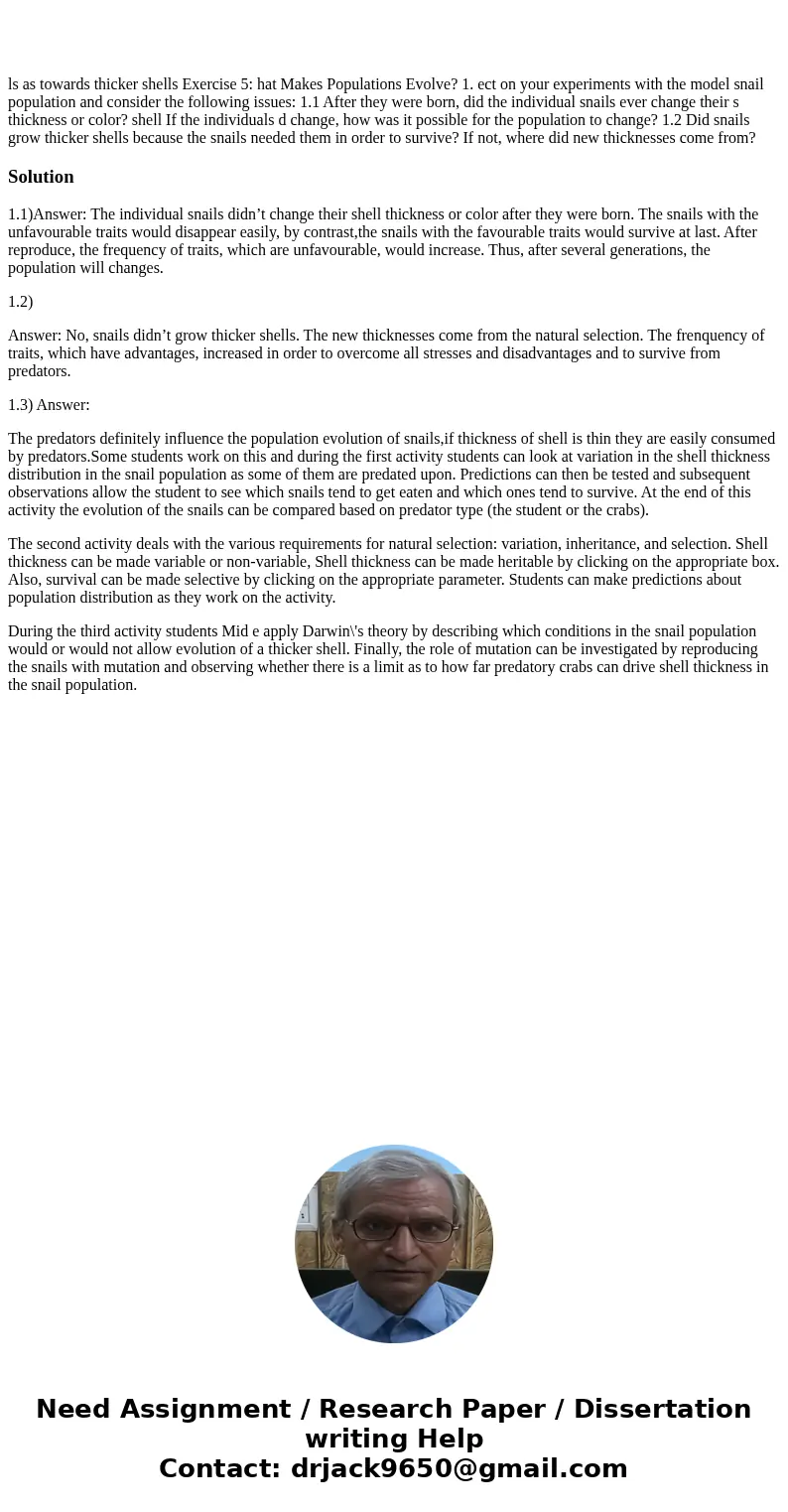ls as towards thicker shells Exercise 5 hat Makes Population
Solution
1.1)Answer: The individual snails didn’t change their shell thickness or color after they were born. The snails with the unfavourable traits would disappear easily, by contrast,the snails with the favourable traits would survive at last. After reproduce, the frequency of traits, which are unfavourable, would increase. Thus, after several generations, the population will changes.
1.2)
Answer: No, snails didn’t grow thicker shells. The new thicknesses come from the natural selection. The frenquency of traits, which have advantages, increased in order to overcome all stresses and disadvantages and to survive from predators.
1.3) Answer:
The predators definitely influence the population evolution of snails,if thickness of shell is thin they are easily consumed by predators.Some students work on this and during the first activity students can look at variation in the shell thickness distribution in the snail population as some of them are predated upon. Predictions can then be tested and subsequent observations allow the student to see which snails tend to get eaten and which ones tend to survive. At the end of this activity the evolution of the snails can be compared based on predator type (the student or the crabs).
The second activity deals with the various requirements for natural selection: variation, inheritance, and selection. Shell thickness can be made variable or non-variable, Shell thickness can be made heritable by clicking on the appropriate box. Also, survival can be made selective by clicking on the appropriate parameter. Students can make predictions about population distribution as they work on the activity.
During the third activity students Mid e apply Darwin\'s theory by describing which conditions in the snail population would or would not allow evolution of a thicker shell. Finally, the role of mutation can be investigated by reproducing the snails with mutation and observing whether there is a limit as to how far predatory crabs can drive shell thickness in the snail population.

 Homework Sourse
Homework Sourse